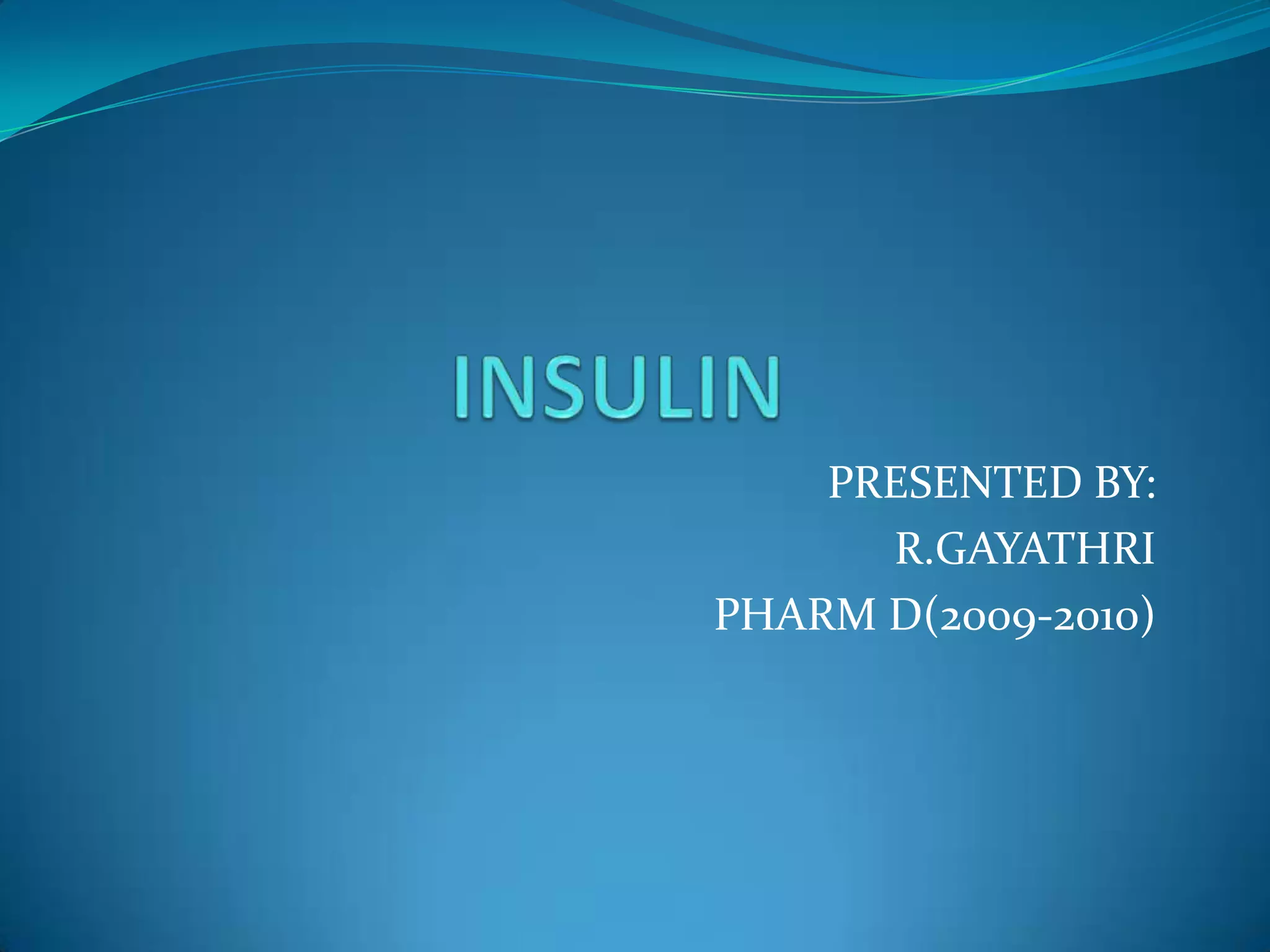The document summarizes key information about insulin, including its discovery in 1921 and structure. Insulin is a polypeptide hormone composed of two chains that is produced in the pancreas and regulates blood glucose levels. It has a short half-life and is degraded in the liver and kidneys. The document also discusses the different types of diabetes, long term complications, treatment approaches including various insulin preparations, the mechanism of insulin's action, and factors that influence insulin secretion and degradation.





























